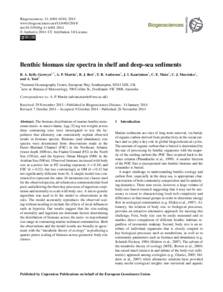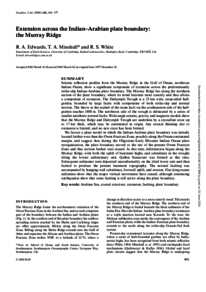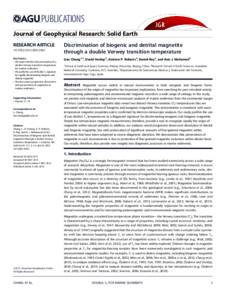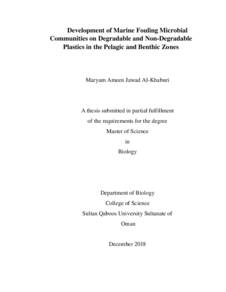Document
Benthic biomass size spectra in shelf and deep-sea sediments.
Identifier
DOI: 10.5194/bg-11-6401-2014
Contributors
Martin, A. P., Author
Bett, B. J., Author
Anderson, T. R., Author
Kaariainen, J. I., Author
Main, C. E., Author
Marcinko, C. J., Author
Yool, A., Author
Publisher
Copernicus GmbH.
Gregorian
2014-11
Language
English
English abstract
The biomass distributions of marine benthic metazoans (meio- to macro-fauna, 1 μg-32 mg wet weight) across three contrasting sites were investigated to test the hypothesis that allometry can consistently explain observed trends in biomass spectra. Biomass (and abundance) size spectra were determined from observations made at the Faroe-Shetland Channel (FSC) in the Northeast Atlantic (water depth 1600 m), the Fladen Ground (FG) in the North Sea (150 m), and the hypoxic Oman Margin (OM) in the Arabian Sea (500 m). Observed biomass increased with body size as a power law at FG (scaling exponent, b = 0:16) and FSC (b = 0:32), but less convincingly at OM (b = 0:12 but not significantly different from 0). A simple model was constructed to represent the same 16 metazoan size classes used for the observed spectra, all reliant on a common detrital food pool, and allowing the three key processes of ingestion, respiration and mortality to scale with body size. A micro-genetic algorithm was used to fit the model to observations at the sites. The model accurately reproduces the observed scaling without needing to include the effects of local influences such as hypoxia. Our results suggest that the size-scaling of mortality and ingestion are dominant factors determining the distribution of biomass across the meio- to macrofaunal size range in contrasting marine sediment communities. Both the observations and the model results are broadly in agreement with the "metabolic theory of ecology" in predicting a quarter power scaling of biomass across geometric body size classes.
Member of
ISSN
1726-4170
Resource URL
Category
Journal articles




